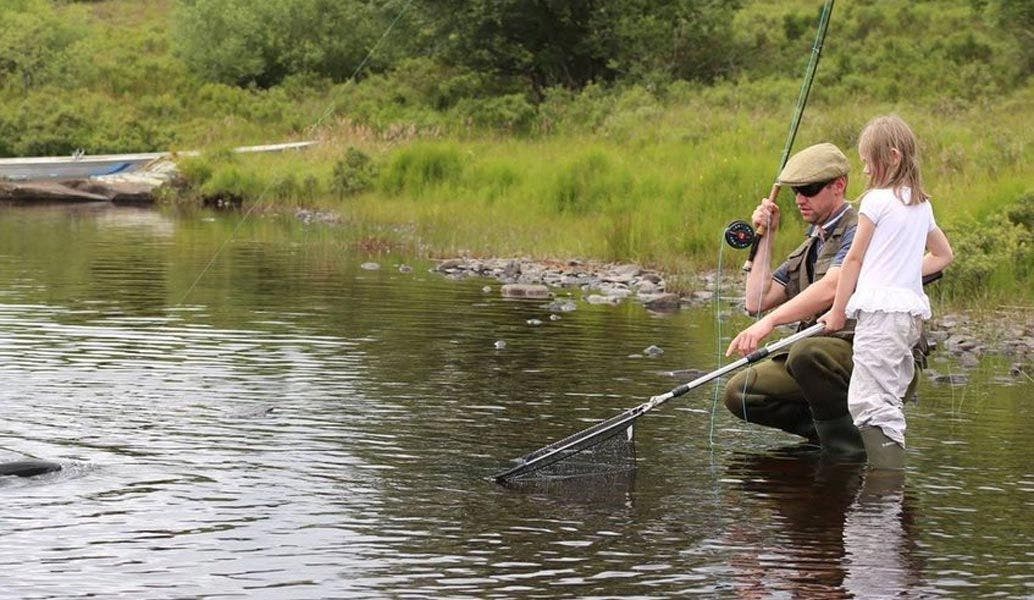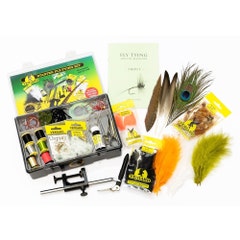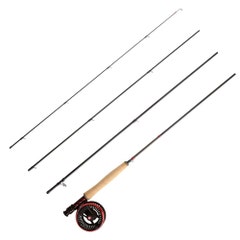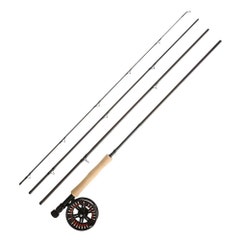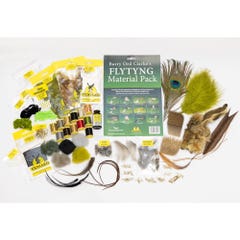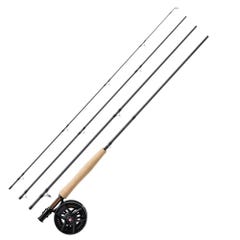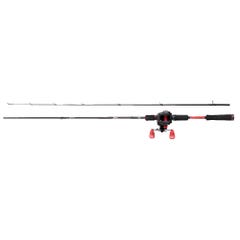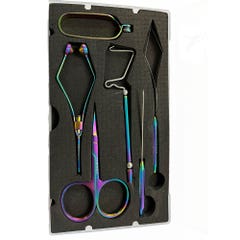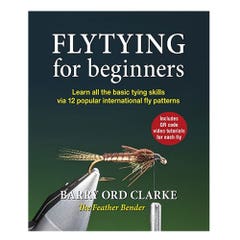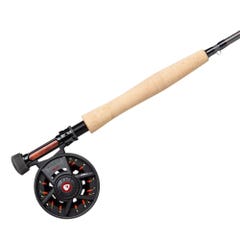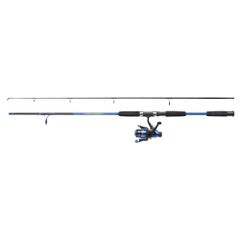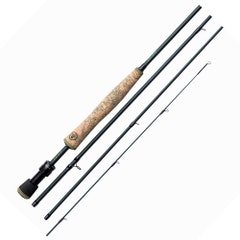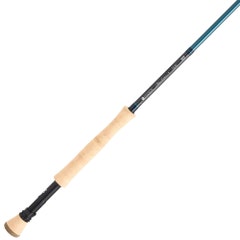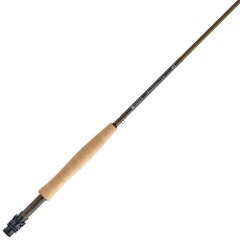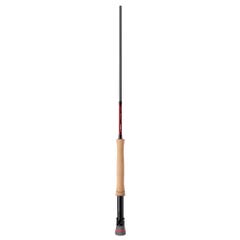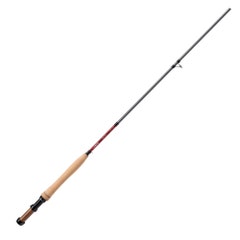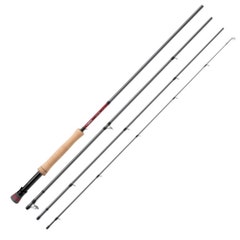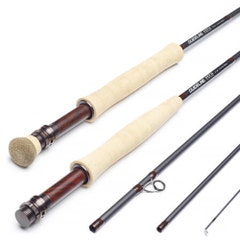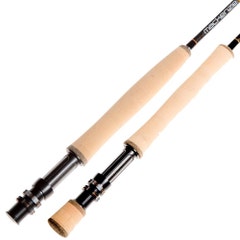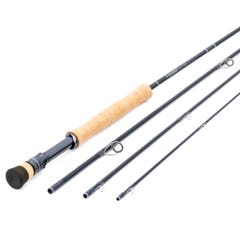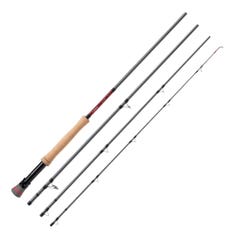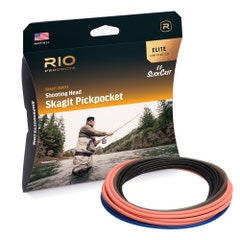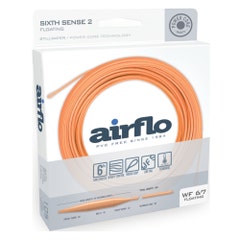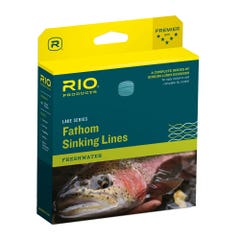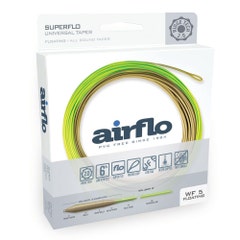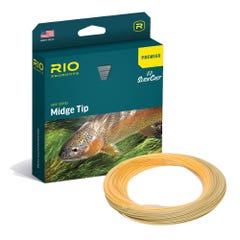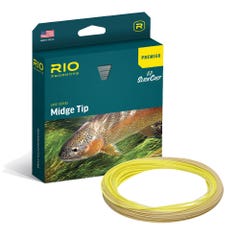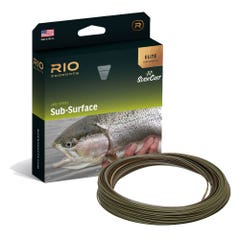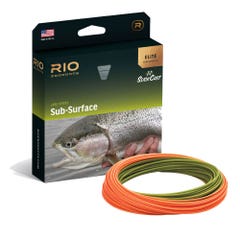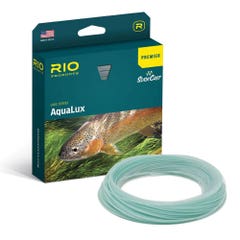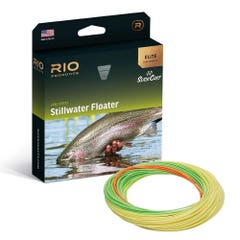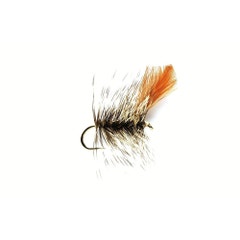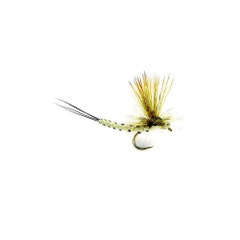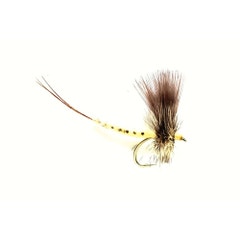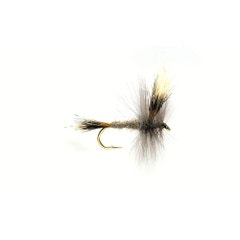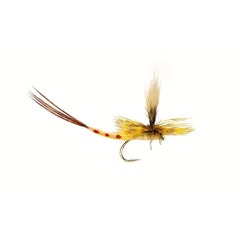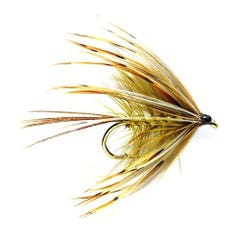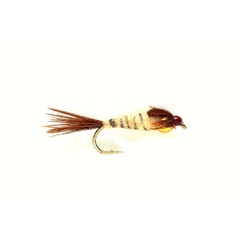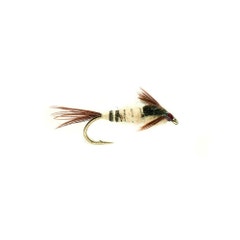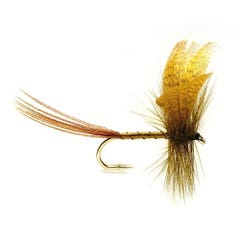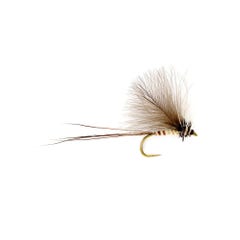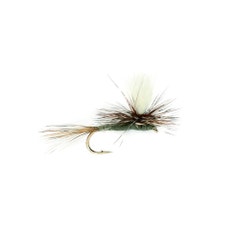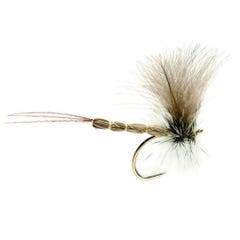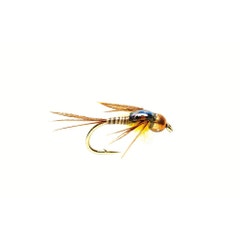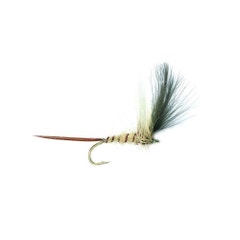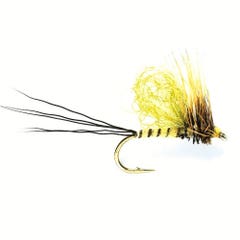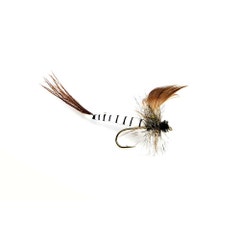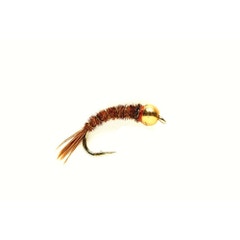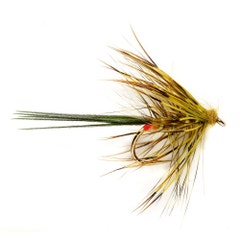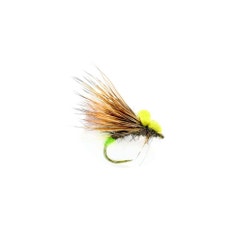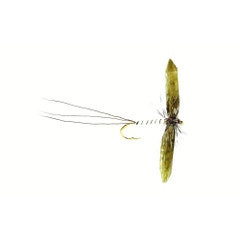Trout fishing is undoubtedly the starting point for almost all fly fishers when they take up the sport. Usually easily accessible and great value for money, trout fishing is popular all across the country from our many lakes and reservoirs to tiny wild brooks, chalkstreams and large freestone rivers.
Trout Fishing Guide
Wherever you are in the UK you won’t be too far away from somewhere to cast a fly for trout, whether that’s wild fishing or stocked ‘put and take’ fisheries (stocked with trout which are caught and kept by anglers) there is something to cater for all - this guide will take you through everything you need to know!
The History of Trout Fishing
Very little was written about fly fishing prior to the writings of Dame Juliana Burners in the late 1400s but people will have surely looked at trout feeding on insects and developed ways of fooling them with lifelike imitations. What was at first a means of feeding the family, then developed into the leisure activity we know today with its many facets being explored and perfected over time.
Famous names such as Isaac Walton wrote of the fly fishing on the Derbyshire Wye, a river now famed for it's population of wild rainbow trout, in his book “The Compleat Angler” (1653) which is probably the most famous publication in the history of fishing. Fly fishing for trout became so popular that it was exported all over the British Empire with fertilised trout eggs being taken by boat to places like New Zealand and Australia so trout populations could be established for people to enjoy.
The 1800s and 1900s saw household names like Halford, Skues, Sawyer and Kite develop techniques with dry fly and wet fly, and with this came intense tackle development by the likes of the Hardy brothers, Charles Frederick Orvis and Charles and John Farlow. This brought fly fishing to the masses with purpose-designed equipment to target all manner of species, not just trout.
Today trout fishing can be anything you want it to be: a wild camping adventure into the hill lochs of Scotland, a picnic with friends on a classic English chalkstream, a competition where you may be representing your country on a famous Midlands reservoir, or simply a quick cast after work on your favourite lake or stream.
Where Trout Live
In the UK, our native trout is Salmo trutta, the brown trout, distributed throughout the British Isles from the southern chalkstreams to the Highlands of Scotland. Trout will tolerate a wide range of water PH levels from alkaline chalkstreams to acidic, peaty lochs, however, they will not tolerate poor quality water. Often in cases of pollution, trout are one of the very first fish species to disappear and are therefore an important marker species when assessing the health of our waterways.
Trout spawn between November and February and need clean and well oxygenated water to maximise their breeding success. The female (hen fish) will clear a patch of gravel in the river or lake bed, using her tail to remove silt and detritus exposing clear stones. This is known as cutting a redd. She will release her eggs when a male (cock fish) is alongside her, he will then release his milt and the eggs, now fertilised, will fall to the riverbed.
They are then covered by the fish with fresh gravel, once again using their tails to kick up stones. This will offer protection to the eggs which will hatch after a couple of months, depending on the water temperature. These eggs hatch into alevins, the first stage in the development in which they survive on a yolk sack for nourishment. The alevins then develop into ‘fry' and then ‘parr’ with only around 5% making it through their first year of life. Once matured into adults after a couple more years, the life cycle begins again.
Other species of trout have since been introduced to the UK, the most common being the rainbow trout. More aggressive and faster growing that the native brown trout, the rainbow trout has become the most popular fish for stocking into rivers and lakes and as such is usually the species most new fly fishers encounter first. Other species, some of which are hybrids created from crossbreeding, include: golden rainbow trout, blue trout, sparctic trout (American brook trout and Arctic char cross), tiger trout (American brook trout and brown trout cross) and cheetah trout (rainbow trout and American brook trout cross).
Many of these farmed fish are bred sexless so they don’t waste energy producing eggs and milt which ultimately means that they can grow faster in a farmed environment. This is great for the fish farmer and offers fisheries a cheaper supply of fish when compared to other slower growing species. It also ensures that escaped fish do not threaten our natural fish populations with breeding competition.
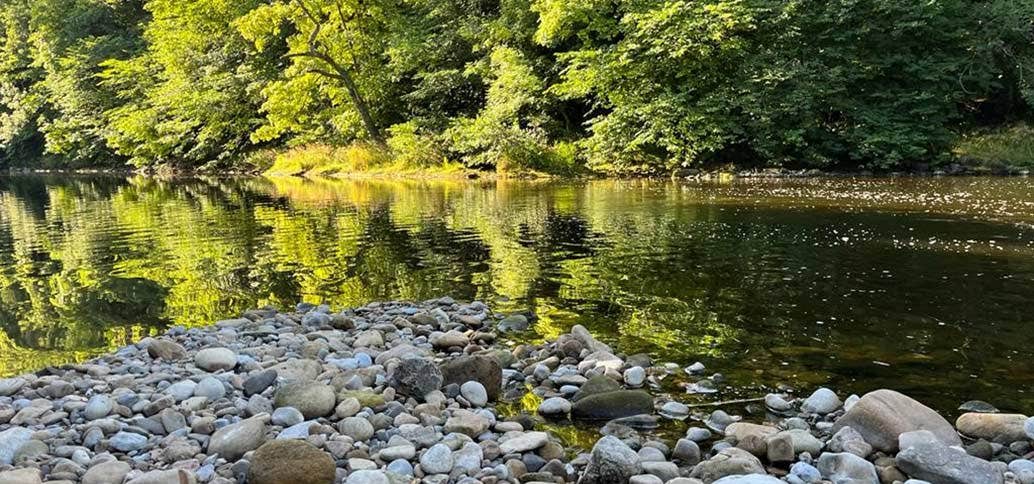

The Trout Fishing Season
Stocked stillwaters and reservoirs in the UK aren’t subject to any closed seasons for any species. Until fairly recently, brown trout had a closed season even on an enclosed waterway, but this has been dropped for a year-round season. Each individual fishery will decide on their opening dates but many will now close during the summer if water temperatures get too high. Fisheries that are fortunate to have a water supply running in and out don’t tend to suffer these issues and will have cool water all year round.
Some well-known reservoir seasons are as follows:
| Rutland Water | 13th March - 31st January |
| Grafham Water | 6th March - 31st January |
| Ravensthorpe | 28th February - 31st December |
| Pitsford Water | 28th February - 31st January |
| Chew | Mid-march – 30th November |
| Blagdon | Mid-march – 30th November |
How to Fly Fish for Trout
How to Fish for Trout on Small Stillwaters
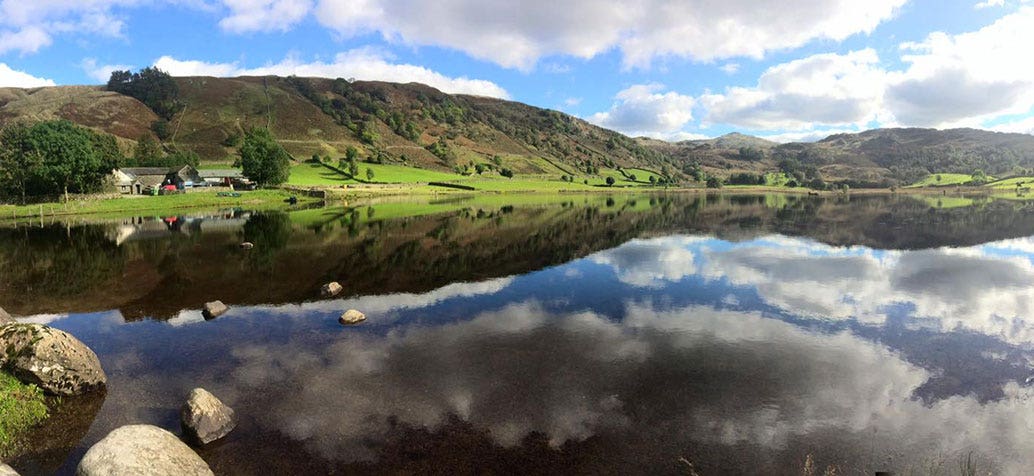

Most fly fishers will have their first foray into the sport on a small stillwater - a lake that can be as small as a few acres up to several dozen acres in size. Easily accessible and spread throughout the country, the small stillwater offers convenience and value for money. Smaller and far less intimidating than a reservoir, it is an ideal place to start. Many fisheries offer both ‘catch and release’ and ‘catch and keep’ options and are regularly stocked with new fish, giving you a great chance of getting your line pulled.
With the majority of stillwaters being a manageable size and relatively shallow in depth, the list of stillwater trout tackle needed to succeed is far smaller than that needed to attack a large water or reservoir. Floating lines and intermediates are often all you need to cover your bases.
Stillwater trout have a varied diet but the biggest part is made up of chironomids (non biting midges) better known as ‘buzzers’. These small insects can be imitated at all stages of the life cycle from bloodworm and pupa to adults hatching from the surface of the lake. Other items that help to make up the diet of a trout include damselflies, a relative of the dragonfly, and the damselfly in its nymph stage is probably the ‘go-to’ imitation for most small stillwater anglers.
These insects hatch out through the warm summer months, but the nymph is in the water and active all year round. A relatively large insect, it makes a good meal for a trout and is always high on the menu. Pond olives, mayflies, corixa, small fish, daddy longlegs and caddis make up the remainder of a trout’s diet, but trout are very opportunistic and will eat pretty much anything that looks like food.
When fishing on small stillwaters, techniques can be split into 2 main approaches: imitative and artificial. An imitative approach involves trying to mimic insects/fish that the trout feed on, whether that be sub-surface or on the top in dry fly/emerger form. Artificial or ‘lure’ fishing methods aim to appeal to the aggressive and inquisitive characteristics of trout by using bright and flashy patterns that often resemble little to nothing that exists in the wild, but can attract an awful lot of attention.
Finding Fish in Small Stillwaters
Whatever method you use, the important thing is to find the fish. This may sound a little self-evident but learning to think like a fish is a very important aspect that will greatly improve your catches. Taking time to look at the water, wind direction, features such as drop-offs and streams flowing in or out, cover from trees, and any feature that could be a fish-holding area or a source of food are likely areas to find trout.
Once you have started, you’ll need to then find what sort of depth the fish are feeding at, depending on the brightness of the light, the air temperature, air pressure and other variables. These factors all dictate where in the water column the food will be and, in turn, the depth at which the fish will be feeding. This can be systematically worked out by letting your flies sink to different depths and seeing when you start to get takes.
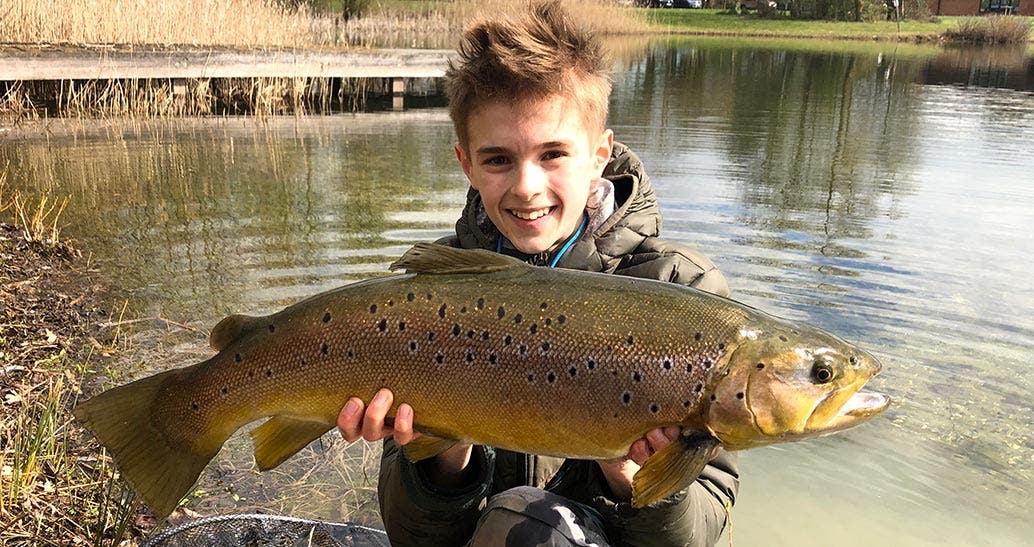

Dry Fly Fishing on Small Stillwaters
This involves using a buoyant fly pattern that will sit either in or on the lake surface and imitate a hatching insect or a fully emerged adult. This is a great visual method of fishing that can be difficult to master but is highly rewarding.
Nymph Fishing on Small Stillwaters
Imitating natural insects subsurface is more often than not described as ‘nymphing’ and can be done statically under an indicator or dry fly, or in the more traditional form of ‘straight line’ nymphing. This can be done on all densities of fly line from a floater down to the fasting sinking lines when fish and insects are deep in the water. Nymphs move slowly through the water and buzzers in particular are often best fished very slowly with a slow, steady figure-of-eight retrieve.
‘Lure’ Fishing on Small Stillwaters
There are a myriad of fly patterns that would be referred to as ‘lures’, more often than not they are brightly coloured and use materials such as marabou or fritz to attract a fish into striking. Fished on all densities of lines and at all speeds of retrieve, from near static to ripped as fast as is humanly possible, this can be a deadly style of fishing when trout are in the mood and is often the starting point for people first getting into the sport.
Small Stillwater Trout Tackle
Small stillwater fly fishers use a variety of rod lengths and weights, but most will fall between 9ft and 9ft 6in and a 6wt to a 7wt. You may see anglers fishing as light as a 5wt or with a heavier setup like a 10ft 7wt on waters where longer distance casting is required.
How to Fish for Trout on Reservoirs
Tackling a reservoir for the first time can be very daunting, especially when faced with a water like Rutland’s 3300 acres. These large waters offer a huge amount of variety for both bank and boat fishers.
Bank fishing can difficult if you aren’t in the know about productive locations, but information is always available from the wardens who will happily point you in the right direction.
Going out in a boat offers easy access to the whole lake and you can cover a large area quickly. Most boat fishers will fish using a drogue to slow down the drift in stronger wind conditions.
The drogue is a large square piece of material that is attached to the side of the boat and opens up and increases the underwater drag as the boat drifts along, acting like an underwater parachute. This is an essential bit of kit, especially when fish are feeding deep and you need extra time for your lines to sink into the taking zone.
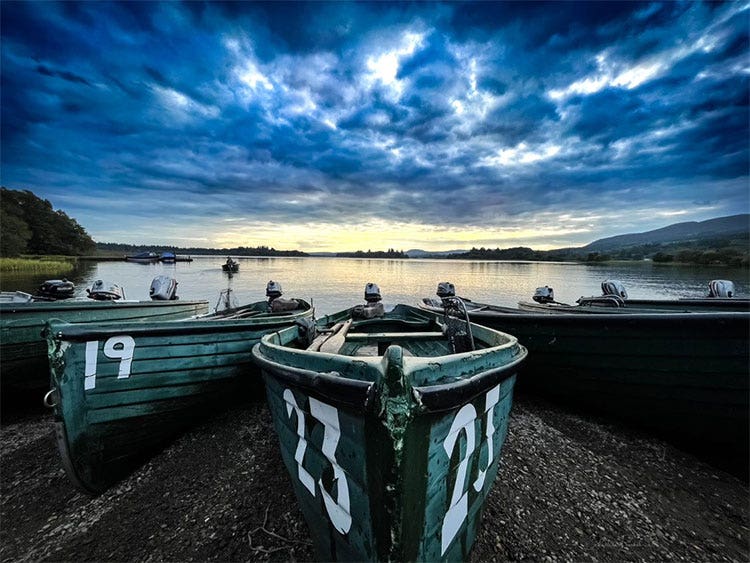

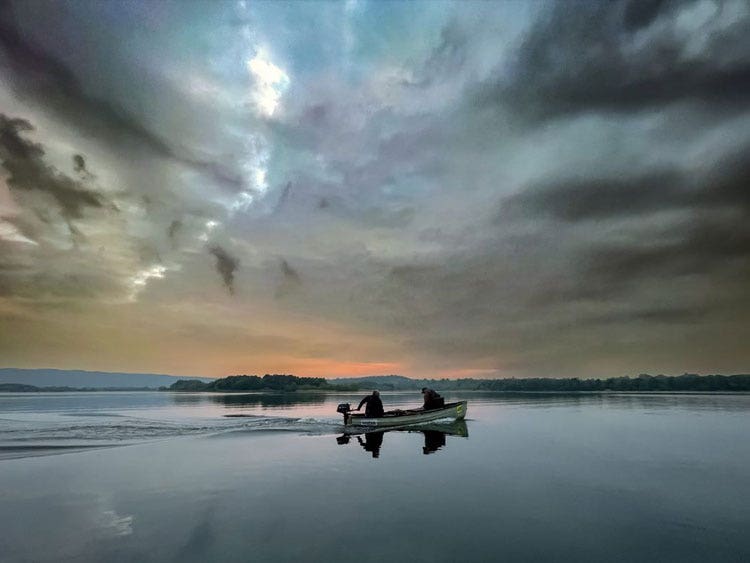

Unlike the small stillwater angler, the reservoir angler often carries a whole array of different fly lines from floating all the way down to the fastest sinkers which may sink as fast as 8 inches per second. The amount of fly lines carried by reservoir anglers may seem excessive at first, but having a variety of different density lines is often vitally important when fishing from a drifting boat. With some reservoirs having depths of up to 100 feet or more, at certain times of the year fish may be feeding as far down as 30 feet, so having super-fast sinking lines is the only way to get down to the depth required.
Fishing techniques are similar to the small stillwaters as insect life will be largely the same, but with so much water for fish to lose themselves in, stocked fish in reservoirs often become more ‘wild’ in their behavior.
Leader construction tends to be a little more complex on reservoirs, with anglers often choosing to fish multiple flies on the same cast. Opting for multiple droppers means more flies in the water and, in turn, a greater chance of catching. Static nymphing, dry fly fishing, stripping lures, the ‘washing line’ and ‘straight-line nymphing' are all popular techniques deployed by the reservoir angler.
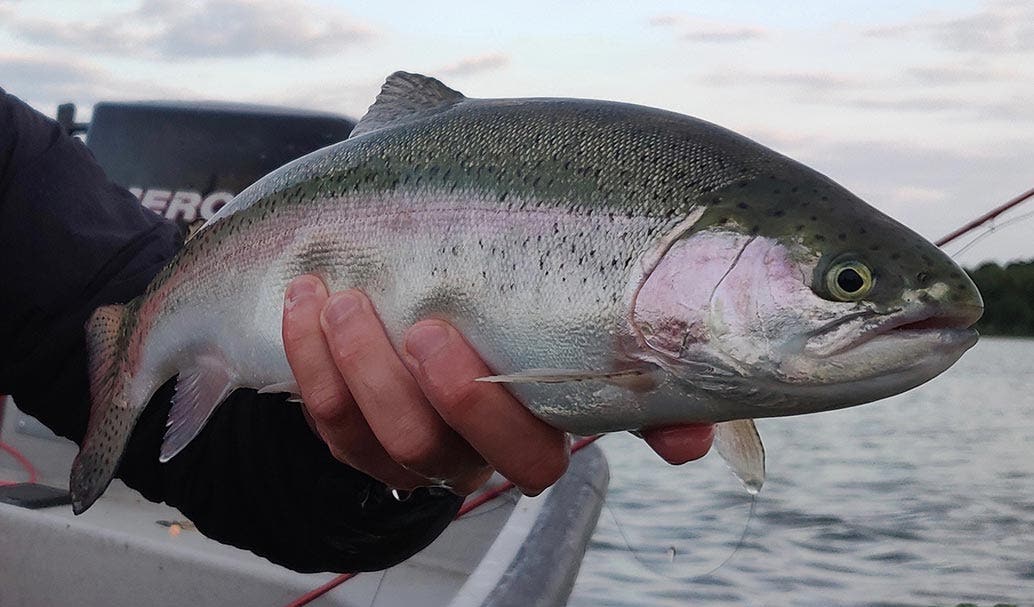

Reservoir Trout Tackle
Most reservoir fly fishers will opt for a 10ft 7wt fly rod, perhaps even an 8wt if long distance casting is required, or to deal with windy conditions. In the summer months, you may see anglers fishing with lighter 10ft 6wt rods for nymph and dry fly techniques. A 10ft rod is more practical for boat fishing than a 9ft or 9ft 6in rod as it will give you greater reach, enabling you to keep your line (and hopefully fish) safely away from the boat.
UK River Trout Fishing
Chalkstreams
The UK is home to approximately 85% of the world’s chalkstreams and these iconic, crystal-clear rivers are famed for their hatches of mayfly and populations of freshwater shrimp. Predominantly, but not exclusively found in the south of England, chalkstreams tempt visitors from around the world. The legendary mayfly hatches can be so large that trout will go into a feeding frenzy and this lack of concern has given rise to the branding of this period as ‘duffers fortnight’ when it can be almost impossible to fail to catch!
These rivers tend to be steady in their flow as they wind their way through meadows and fields with a gentle gradient. Fed from underground aquifers, the gin clear water is filtered through chalk which gives it the clarity and alkaline PH along with steady cool temperatures all year round, making them an ideal habitat for a whole array of species.
There are approximately 160 chalkstreams that can be found in the UK from the south coast all the way up the east coast of England and as far north as Yorkshire.
Notable chalkstreams include:
River Test
River Itchen
River Avon
River Anton
Bourne Rivulet
River Dever
Driffield Beck
River Lambourne
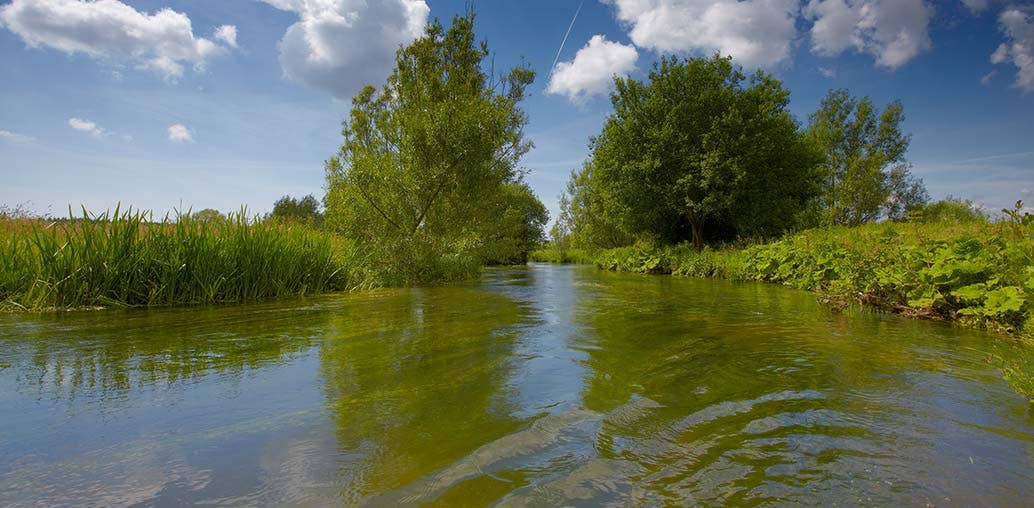

Freestone Rivers
The second type of river we have in the UK is known as the ‘freestone’ or rain-fed river, sometimes described as a spate river (due to the volatile nature of their water level).
These rivers run clear but often with a tinge of colour similar to tea and are susceptible to flooding as the rain collects in the hills and filters down into the river itself. Unlike the chalkstreams which offer a very visual style of fishing, the colour in a freestone river rarely allows for sight fishing so a higher level of watercraft is needed to succeed.
These rivers tend to flow much faster as they travel on a steeper gradient forming riffles, pools and glides - a great habitat for fish and invertebrates alike.
Notable Freestone Rivers include:
River Eden
River Wharfe
River Emont
River Tyne
River Dee
River Towy
River Calder
River Ure
River Swale
River Annan
River Fly Fishing Techniques
River fishing in the past consisted of 2 main techniques: dry fly and wet fly fishing. Over the last 30 years or so, many new techniques have been developed and added to the river angler’s armoury and we’ll go into a little more detail below.
Upstream Dry Fly Fishing
Dry fly fishing is for many the pinnacle of fly fishing and the visual aspect of watching a fish rise to your well-presented artificial is one of the biggest thrills to be had on a river. Using a knotless tapered leader and adding tippet to the end improves presentation and will also give a longer life to your leader. Your dry fly is typically be cast upstream of a rising fish and then allowed to drift back down over your target. Once a fish takes the dry fly, a brief pause should be employed before raising the rod to ‘strike’, allowing the fish to close its mouth and turn back down to its lie with your fly.
Downstream Dry Fly Fishing
Downstream dry fly fishing can be a deadly art to learn, particularly on rivers with fast flows and many convoluted currents. The cast is ‘dumped’ high downstream and the rod is then lowered as the line drifts downstream towards your target giving slack line to avoid drag. When well-practiced, downstream dry fly can yield some very long dead drift casts and fantastic presentation in even the most difficult of situations where upstream dry fly simply wouldn’t work. Drag-free drift with all river fishing is so important to presentation and none more so than with a dry fly, the downstream method being a much-neglected skill.
North Country Spiders
North country spiders are an extremely effective way of fishing traditional hackled wet flies whose fibres waft tantalisingly in the current and mimic an emerging insect or a crippled or drowned adult. This is a really great technique to use when fish are subtly sipping flies down or targeting emergers before they hit the surface. It’s a technique that was developed and perfected on northern freestone rivers, hence the name. A leader with 2-3 flies is allowed to drift down stream at the same rate as the river flows with the key being to keep a high rod to allow for a long belly of line to hang from the tip. This allows fish to rise up and take the fly before dropping back down in the water and giving a meaningful draw on the line to indicate a take.
Upstream Nymphing
Upstream nymphing is a great way to target fish when there is no apparent surface activity. About 80% of what trout eat is either on or just off the bottom of the river, so weighted flies play a crucial role here. There is a variety of ways to add weight to your flies, either by incorporating a lead underbody or by using a metal bead-headed fly. The weight of fly you select will largely depend on the depth of water you are fishing and its flow rate. If you aren’t getting caught up on the bottom every now and again, then you probably aren’t getting deep enough. This method involves casting 1-3 flies upstream approximately 2-3 rod lengths away, and then retrieving the line as the flies drift downstream at the same speed at which the river is flowing. Indicators can be used to aid bite detection but many will simply watch their braided loops for any sign of movement. A useful addition to your tackle bag is a tub of Mucilin to help make your braided loop float high on the surface. It is then just a case of systematically covering the water ahead of you and hoping to encounter a fish.
Czech Nymphing
Czech Nymphing is the name given to a short range upstream nymphing technique which became popular in the 90s, developed in the rivers of central Europe. Leader setups are similar to upstream nymphing but the flies are lobbed upstream, as opposed to being cast in the typical manner, before being allowed to drift downstream and trundle along the riverbed. This technique involves the use of a very short length of fly line with fly line acting as an indicator. The very slightest move, dip, or deviation in the front part of the fly line requires a strike - it could be a fish. This is a particularly effective method for grayling fishing in the winter (you can check out our winter trout fishing guide as well) when they start to shoal up, and it can sometimes lead to veritable cricket scores of fish from a relatively small area of river. This method lends it is self to the use of longer, lighter rods such as 10’ 2wt - 4wt.
The ‘Duo’
The ‘Duo’, also known as ‘New Zealand dropper’ or ‘Klink and Dink’ is a fantastic method for searching out fish on a river and gives the angler the ability to cover water on the surface (with a klinkhammer or similar buoyant dry fly) as well as below at the same time with a weighted nymph.
The upper fly on your cast can be either tied onto your leader via a dropper or directly onto the end of a knotless tapered leader with a snood of fluorocarbon (a similar length to the depth of the water being fished) tied onto the bend of the dry fly. Some flies have a small ring that has been tied in on the hook bend with which to attach your point fly, being specifically designed for this method. This rig can then be systematically cast upstream and allowed to drift at the same speed as the river, allowing you to cover all of the water in front of you before working your way upstream. Fish will either rise to the dry fly or will take the nymph drifting below causing the dry fly to disappear under the surface, thus acting as both a dry fly and an indicator at the same time. This can be modified further by adding a second nymph to the setup, then known as the ‘Trio’ method.
Euronymphing
‘Euro’ style nymphing is a collective phrase used to describe deadly techniques of presenting nymphs at long range without the drag than can be caused by a conventional fly line. Either no fly line is used at all, or you can use a specialised Euronymphing line built with an extremely thin diameter. Many anglers will simply use a long length of monofilament as a running line, leading to the actual leader setup of 1-3 flies with the point fly acting as your heavier anchor fly. This leader is then flicked upstream and allowed to drift down as the flies bounce along the riverbed. This provides direct contact between the angler and their flies, with no fly line to worry about on the surface. A hi-vis length of monofilament or short piece of in-line indicator is used to detect takes. As with Czech nymphing, even the slightest movement of the indicator should lead to a strike with the rod. Long, light rods over 10’ in length are perfect for this and many Euronymphing specific rods are now available on the market.
Streamer Fishing
Streamer fishing is an exciting way to fish rivers, whereby the angler tries to appeal to the predatory, aggressive nature of trout. Often this method will pick out the largest fish of all. Large flies are used to imitate baitfish such as smaller trout, minnows, coarse fish etc which are cast across the stream and allowed to swing around on the current, similar to how a salmon fisher would cover a pool. Unlike the nymphing and dry fly techniques listed above which all aim to allow the fly to drift downstream with as little external movement as possible, streamers can be stripped and twitched to mimic the movements of a small fish. Because these flies are often heavier and more wind-resistant, streamer fishing calls for fly rods of around 9-9ft 6in and usually a 6wt - 7wt. Fly lines should also be able to turn over and deliver a large fly easily, so a more front-loaded line taper is ideal.
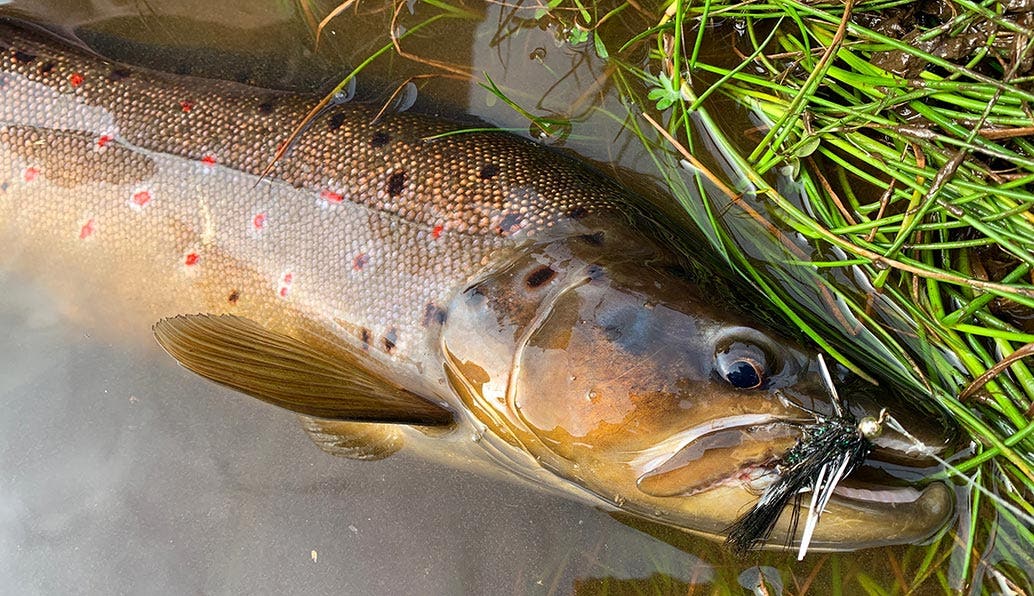

Trout Fishing Tackle and Gear Guide
Getting started with fly fishing for trout has never been easier. The UK is fortunate to have a huge network of easily accessible stillwater fisheries that are available on a day ticket basis.
Manufacturers have created fly fishing starter kits to fit almost any budget, most of them including a rod, reel, backing line, a floating fly line and a ready-fitted tapered leader. Then it is simply a case of adding a fly to the end and you’re good to go! These kits come in a variety of lengths and weights and have been specifically designed to cover a variety of fishing styles you’d like to take up, from river to stillwater.
Trout Fishing Rods
Every fly rod and fly line has a specific length and numbered line rating, designed to balance the whole outfit together. For example, a rod that is described as 8’ 6’’ #5 is eight and a half feet long and is designed to work with a 5-weight line. That sounds quite straightforward but what does that really mean?
Fly lines were standardised many years ago (to a certain extent) and a consensus was met that meant that its rating would be based on it is physical weight. If it fell between A and B, it would be a 1 weight, between B and C it would be a 2 weight and so on. This meant that in theory you could pick up any rod and match that to a fly line of the same number and they should work together. Be aware that just because it is for example a 2 weight it won’t be slap bang in the middle of the weight parameters, it could be on the lighter side or on the heavier side but should fall within that range.
Trout rods are typically a rod to be used single handed and range in length from around 6’ all the way up to over 11’ and will have between 2 and 7 sections. Rods will have different actions depending on their specific use their action can be split up in to slow/full, medium/middle and fast/tip actioned and refers to how the blank behaves under compression. Actions of rods are often confused by the rate of recovery and this is simply the speed at which a rod returns to straight after it has been flexed, most manufacturers are aiming for a very fast recovery on a rod regardless of what type of action they have achieved in the blank.
This is a rough outline of the different lengths and weights of rods and what they are designed to do.
- 6’ - 8’6” Small rivers and streams usually for a line rating between #2 and #5
- 8’6” - 9’ Medium rivers usually for a line rating between #3 and #5
- 9’ - 10’ Stillwater and reservoir usually for a line rating between #6 and #8
- 10’ -11’ Reservoir and traditional loch style usually for a line rating between #6 and #8
- 10’ – 11’+ Euro style river nymph fishing typically for a line rating between #2 and #5
Trout Fishing Lines
Lines come in 2 main tapers ‘double taper’ and ‘weight forward’ and will often be abbreviated to DT and WF and are available in many different densities. A DT has an identical taper at both ends of the line and can be fitted to the reel either way around, traditionally was the choice of taper for the river angler. These lines have fallen out of favour with many anglers as the weight forward has taken over.
A WF as it is name would suggest has a heavy front weighted part that tapers into a fine level running line with the premise being to aerialise the heavy weighted head and shoot the remaining line out, meaning less casting and more fishing. There are hundreds of taper designs in a WF and each one has been created to fill a particular need by anglers. Many floating lines now come in multiple colours so the angler can easily identify the weighted part of the line. There are tapers designed for fine presentation, quick loading, long casts, Spey and roll casting and turning over big flies, all falling under the generic description of WF but can have very different characteristics.
Lines range from full floating, midge tip (short sinking tip on full floating line), neutral density (very slow sinking), Intermediate (1 ½” – 2” per second), and various other full sinking lines from 3 - 8 inches per second (IPS). This allows the angler to cover all depths of a fishery from the surface to the very bottom.
Trout Fishing Reels
Fly reels are no longer viewed by most as simply an item to carry your fly line. Now different designs have seen reels play a larger part in fly fishing for many. Manufactured mainly from either plastic or aluminium (cast or fully machined), and in standard traditional arbor design, mid arbor or the most popular large arbor design.
Traditional reels with a simple spring and pawl click drag are still made, but most are fitted with a disc drag system that allows a far more meaningful level of drag to be applied whilst playing a fish.
Solid spool reels have been joined by wallet-friendly cartridge systems that use a plastic style cassettes to hold your lines; which makes carrying several lines cheaper than ever before and are perfect for the reservoir or stillwater angler with lots of lines. Most reels will leave the factory set to left hand wind but most can be easily changed to wind with the handle on the right.
Some other items you will require are:
Trout Landing Nets
These come in various styles. Stillwater fishing nets will, on the whole, have a collapsible head that will either be a folding style or solid frame and almost all come with an extendable handle to increase the length of reach. All nets are knotless and many have chosen to make the switch to rubberised mesh which is better for the fish when practicing catch and release and are said not to smell as bad as more traditional mesh. River nets are more likely to have a short, fixed handle and are described as ‘scoop’ nets which are perfect for when you are wading.
Trout Flies
Once you have decided what type of fly fishing you are going to be doing (river or lake) selecting a few flies can seem really daunting but manufacturers like Fulling Mill have made very handy pre-selected packs of flies for specific uses from river dries to stillwater lures. These helpful packs are a great place to start and before you know it you will fill a box and undoubtedly get to have some favourite patterns that you have faith in.
There are lots of different fly boxes on the market from the traditional metal and wooden boxes to the modern waterproof plastic boxes. Linings will either be flat or rippled foam or the more popular slotted foam that will hold your flies in safely and securely.
Fishing Sunglasses
An essential bit of equipment for 2 reasons, the most important being that of eye protection. Not just when getting started but going forward in your fly fishing career, always make sure that you have your glasses on while fishing, it will drastically reduce the chances of a mishap when casting. Secondly, if polarised, fishing sunglasses will cut out the surface glare and allow you to see far better into the water which is even more important if you are fishing a clear river or lake. The 2 most common colours of lens for UK fishing are copper/amber and yellow. Copper is a great all-round colour and the yellow is great for low light conditions.
Trout Fishing Accessories
There are a few other bits that you will require to complete your essential kit. These include:
Snips/scissor forceps: for clipping your line, de-barbing flies and removing the hook from fish.
Floatant/mud: There are several types of floatant which are a must-have for dry fly work and whether gel, aerosol or powder it should always be in your bag. Mud or fullers earth mix is great for taking the shine off and degreasing your leader material.
Priest/spoon: When you want to take a fish for the table a priest is used to dispatch the fish humanely. 2-3 firm hits to the head directly above the eyes is more than enough to administer the last rights. Once dispatched, a spoon will allow you to examine the stomach contents of your catch - a very useful way to show you a trout’s eating habits.
Leaders and tippets: Knotless tapered leaders are a must if you are fishing dry fly or unweighted flies. These have a continuous taper from fat to thin that allows the energy transfer to continue down to your fly and help to get your cast to land straight onto the water. These can be extended by adding tippet of a similar diameter and breaking strain either with a knot or by using tippet rings, allowing for better presentation and making the leader last longer. The most common types of material used for leaders and tippet are nylon, fluorocarbon and copolymer.
How to Catch, Play, Land, Handle and Release a Trout (and other fish)
Whether fishing on a river or a stillwater, when a trout eats your fly you must strike into the fish. In the case of stillwater nymph or lure fishing (anything subsurface) this will be indicated by a sudden tug on the end of the line. When you feel this, you must lift the rod up in a meaningful fashion so as to set the hook. Watching the end of your fly line for any indication of a take before you feel it will greatly improve your hooking rate. Often you will see the line zip away long before you feel the tug especially if you are fishing at any kind of range.
Dry fly fishing on still or running water requires a brief moment of delay before striking after the fish has risen, this allows the fish to open its mouth, engulf the fly, close their jaws and start to return down to their position in the water. This delay is vital to ensure a hook up - too fast and there is a very good chance that you will pull the fly from the fish’s mouth without a successful hook-set.
Nymphing on a river again involves an immediate strike whether you are fishing with an indicator, duo or long lining and watching the end of your fly line. If there’s any deviation in in the movement of the line you should strike as you have no way of determining if it is a fish or the bottom, so treat any movement as a potentially hungry fish!
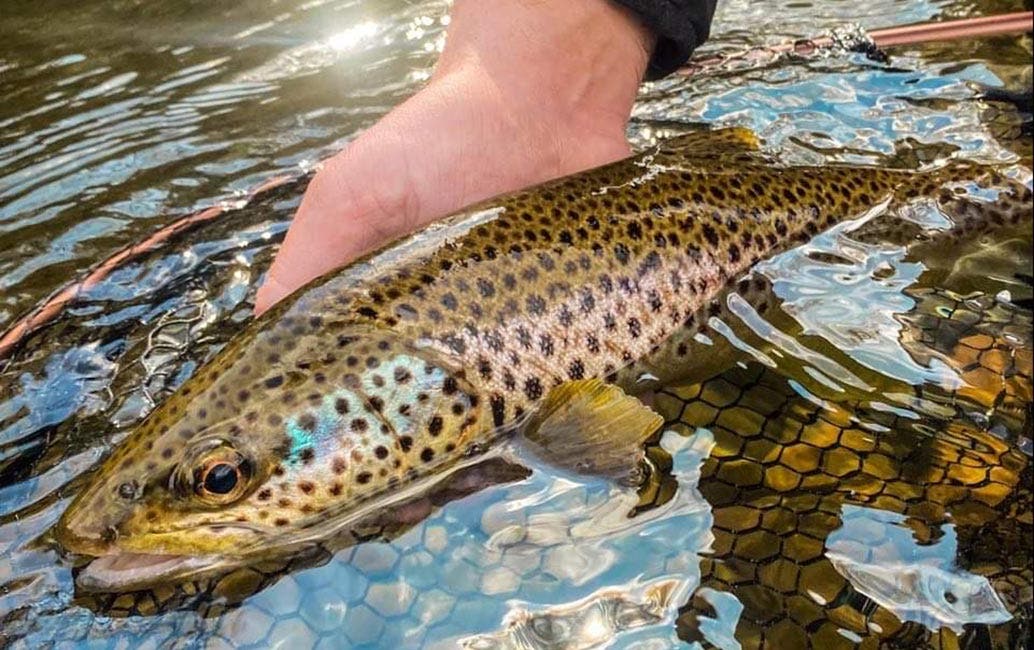

Once a solid hook up has been made the name of the game is all about keeping steady tension between you and the fighting fish. Keeping your rod high will minimise the chances of breaking a fish of as the rod acts a one big shock absorber cushioning any thrash or run that a fish may make. Most anglers traditionally would “hand line” a fish by allowing their line to feather through their fingers as a fish runs and pull in the line as the fish comes towards them, keeping constant pressure on the fish and a good bend in the rod.
With modern large arbor reels that mostly have a disc drag system, more and more anglers chose to use the reel to play their fish. This has the benefits of allowing the reel to do the work of keeping constant pressure applied during the fight by adjusting the braking system and has the added advantage of clearing all of your fly line from your feet. When fishing barbless hooks, some anglers worry about the hook falling out more easily. As long as you keep tension between you and the fish this doesn’t happen any more often than when using barbed hooks and, if anything, the hooking is better as the barb can often cause a less effective penetration.
As the fish tires, position your net in the water submerging the mesh of the net, slowly drawing the fish over the top of the net before lifting the net and capturing the fish. At this point, if fishing catch and kill, the fish should be dispatched as quickly as possible with 2 or 3 firm hits with a priest.
If practicing catch and release, which has become so popular with today’s anglers; the fish should be kept in the net in the water, the fish should never be removed from the water and taken to the bank. Allow the fish to lay in the net, wet your hands (this helps to protect the layer of slime around the fish and minimise the chances of any future infection), gently unhook the fish and hold the fish in the water allowing it to fully recover before it swims away. Keep a hold until the fish starts to kick and then let it go away under it is own steam. If C&R is practiced in a considered way, fish survival is very high. In certain instances the same fish can be caught time and time again, suffering no negative long term effects. A prime example of this was shown a few years ago on Haywards Farm Lake at the Sportfish Game Fishing Centre, after a lone tiger trout was accidentally stocked instead of going into Hobby Lake. This fish was caught and released 3 times in one season, clearly demonstrating that catch and release really does work when done properly.
We hope this will give you a great insight into getting started in trout fishing whatever discipline you are interested in trying. The best advice we can offer is to seek out an instructor to teach you how to cast properly. There is nothing harder than trying to correct ingrained bad habits later down the line. Tuition is available at the Sportfish Game Fishing Centre for all levels of fly caster, from beginner to advanced and we offer hourly and full day courses.
Tight Lines! JT.
If you’ve any top tips for trout fly fishing of your own, or wish to ask a question, please leave your comments below – it’s great to share & chat! You can also share with all your friends via our social sharing buttons on this page.

